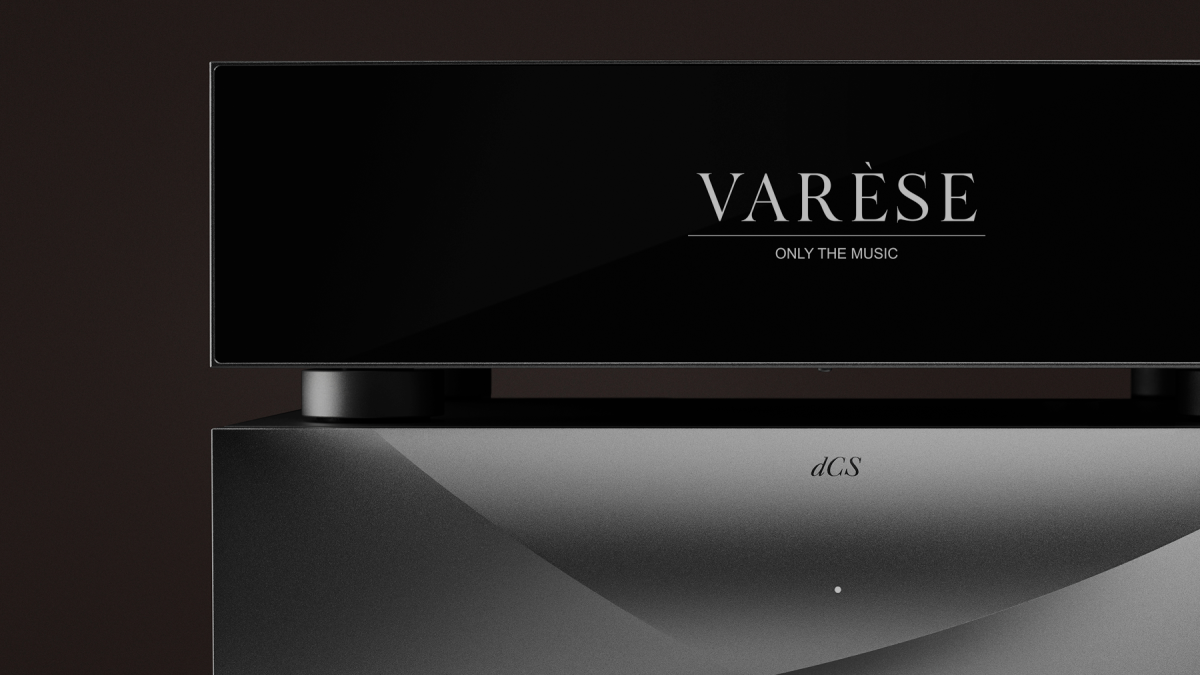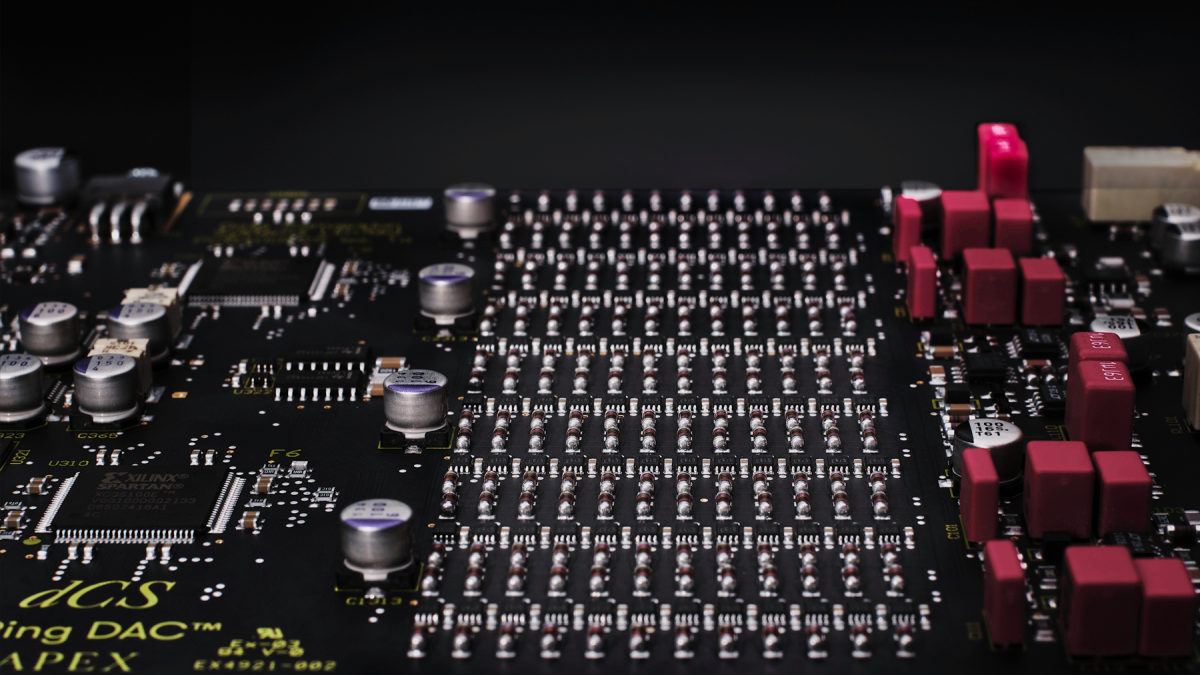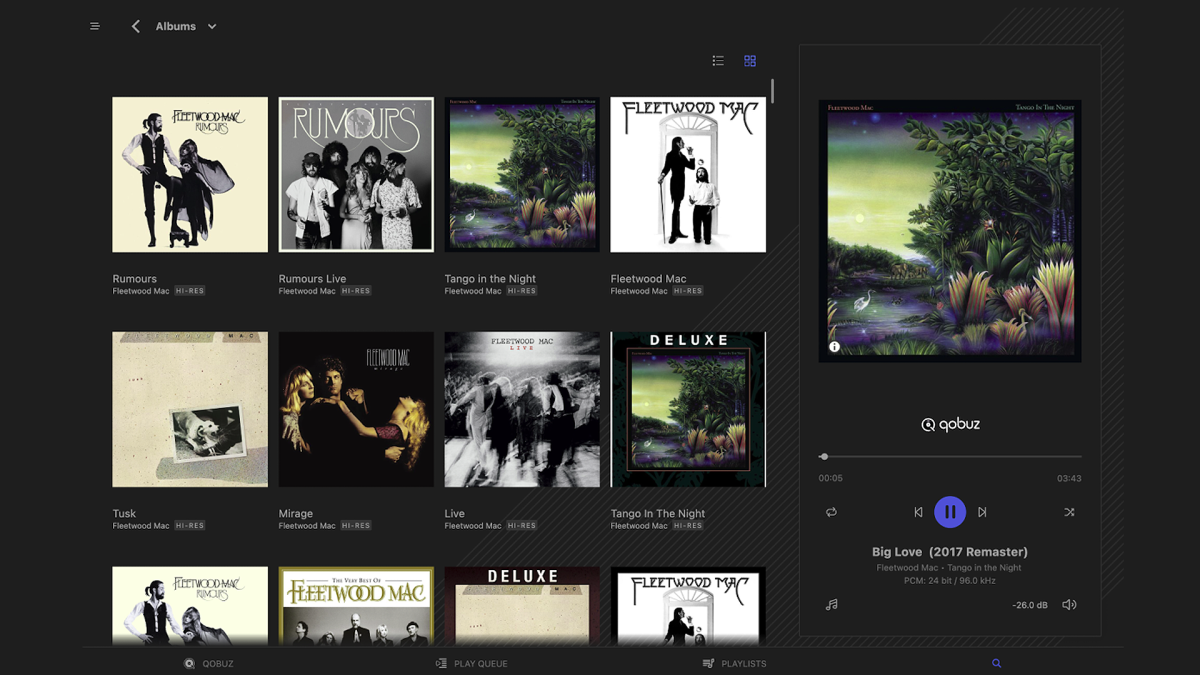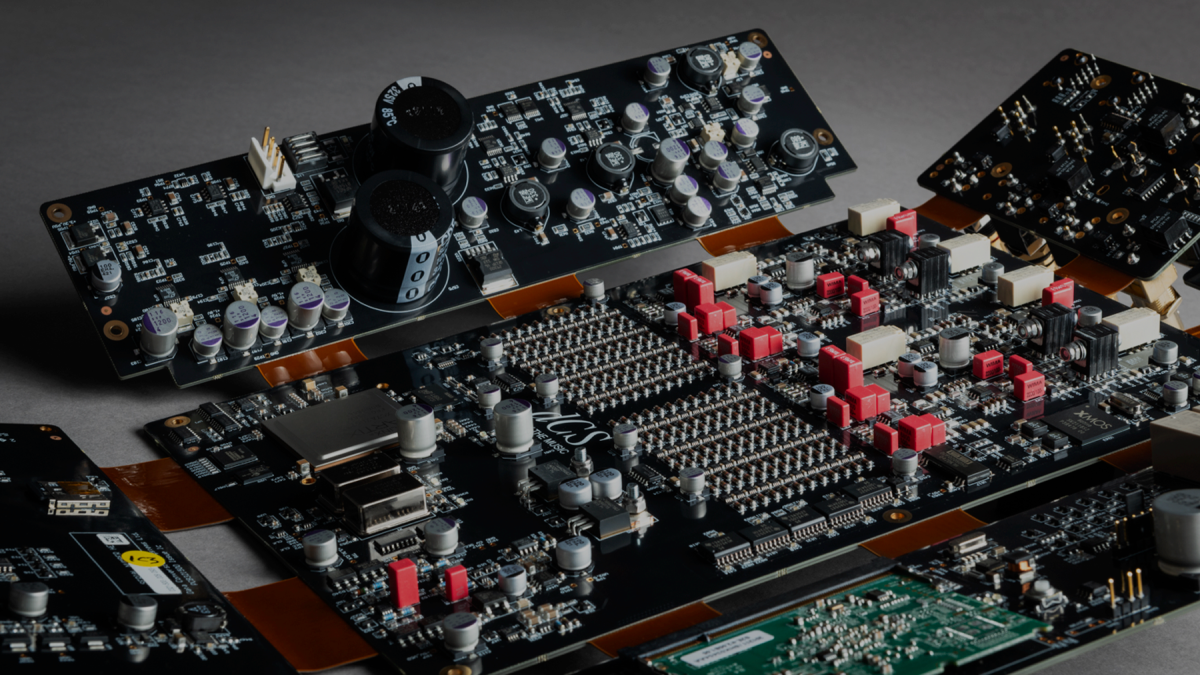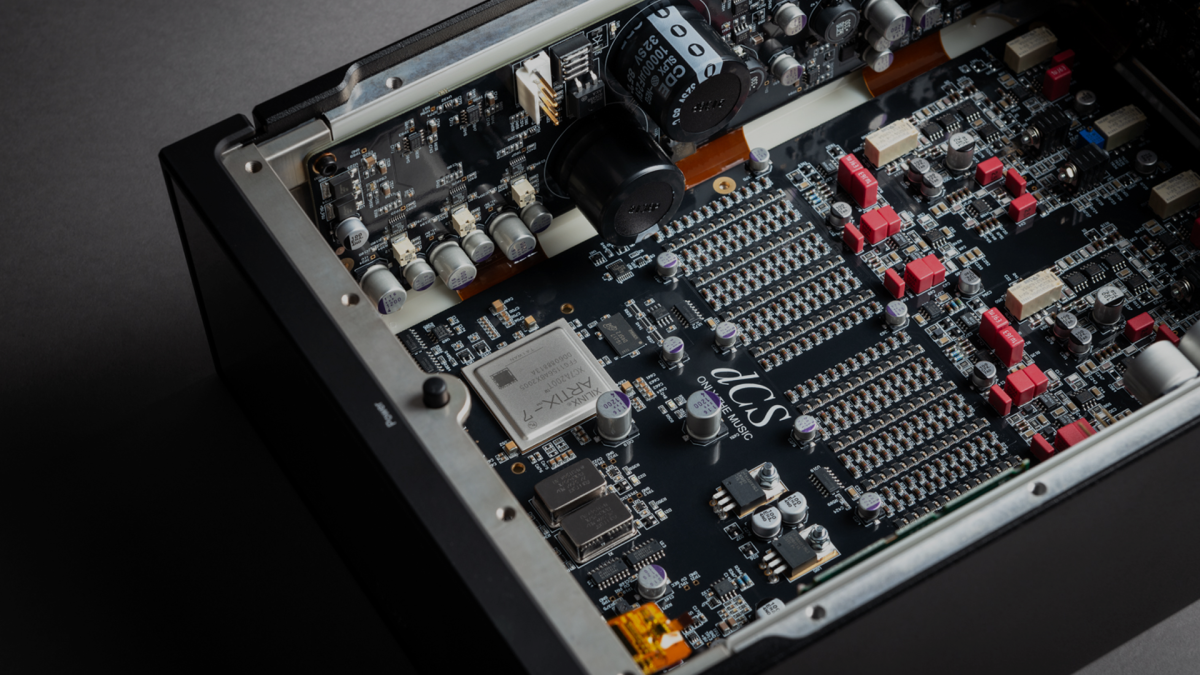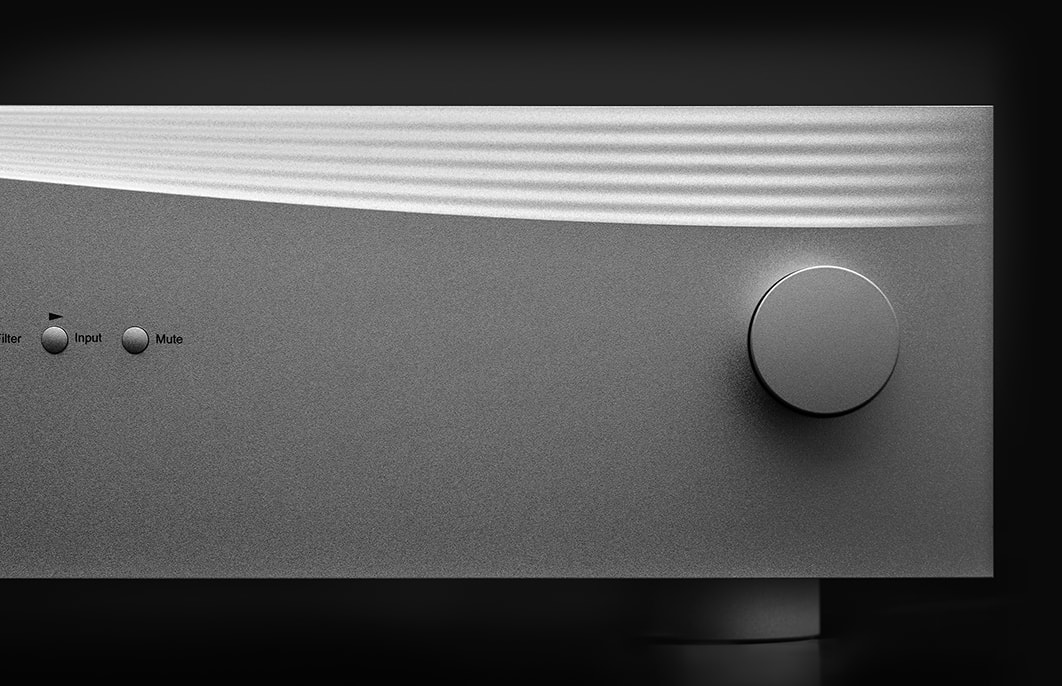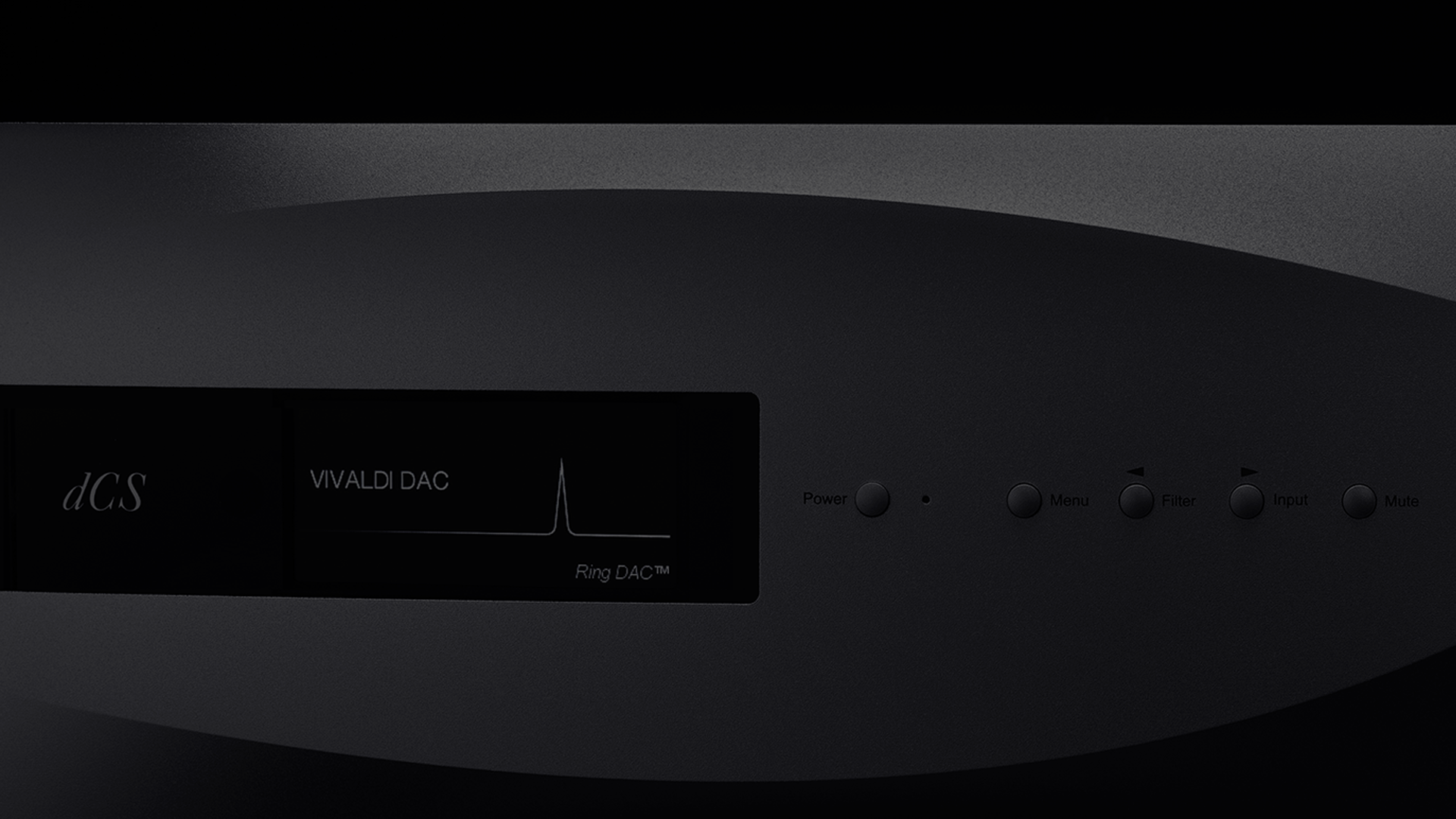
From Varèse to Vivaldi
How existing dCS products have benefitted from Varèse research and development
Varèse is our most advanced and best-performing music system yet. Here, we explain how some of the breakthroughs made during its development have led to upgrades and improvements across the dCS product range, allowing existing owners to benefit from our latest innovations.
‘Blank Sheet’ Designs: Rethinking the audio experience
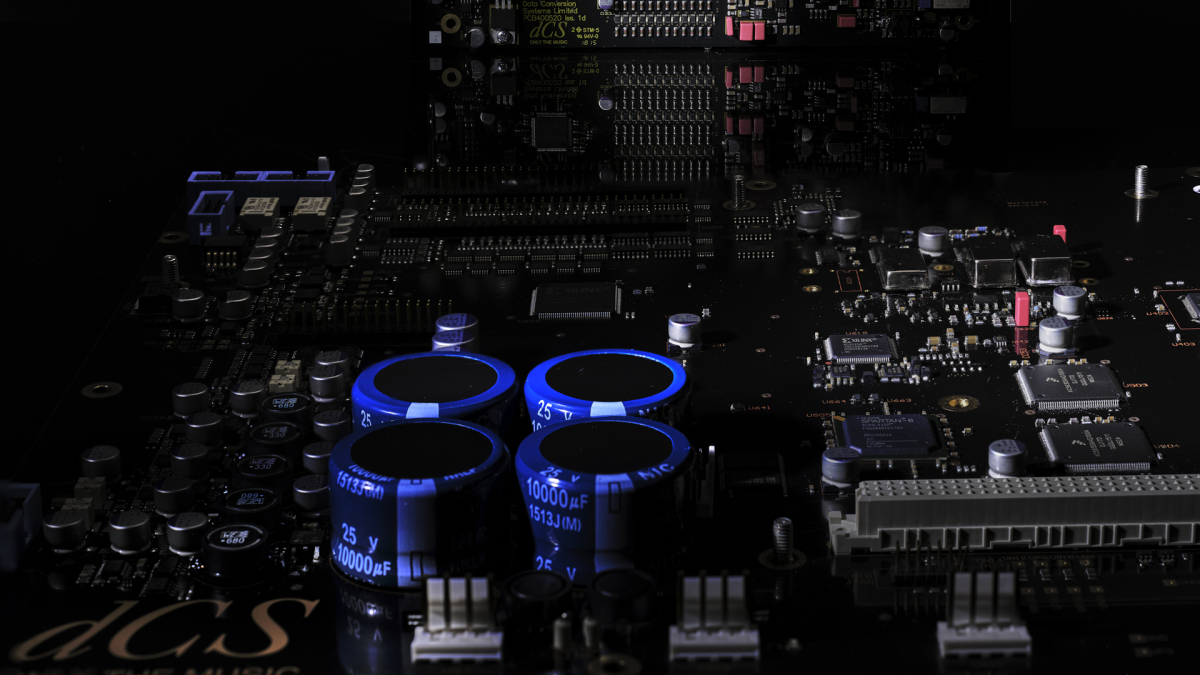
There are two main strands of research and development at dCS: working on updates to existing products and exploring how we can advance the current state-of-the-art in digital audio.
These strands often overlap and both share the same ultimate goal: to bring listeners the most accurate, advanced and revealing digital playback systems and separates.
Once in a while, our work in these areas leads to what we call a ‘blank sheet’ design. This is a chance for dCS engineers to think beyond technical or commercial parameters and explore how we can exceed the capabilities of existing products and platforms.
This involves teams from various disciplines – including software and hardware, industrial, mechanical and UX design – working in tandem to deliver meaningful improvements that will benefit listeners now and in the future.
This process often culminates in the creation of a new ‘reference’ system that we feel sets new standards in its measured and sonic performance. This, in turn, gives us a new technical DNA that we can draw on to create new products and enhance the performance of existing dCS components.
Our Vivaldi system, for example, stemmed from projects undertaken to enhance performance in several key areas, including jitter and crosstalk. dCS engineers worked on a suite of new developments that enabled us to reproduce audio signals with even greater precision – leading to an even more natural and musical performance – whilst bringing listeners a more flexible architecture with near-unlimited scope for future upgrades. (More on Vivaldi’s development here.)
We’ve since created a range of products using technologies first seen in Vivaldi, from the Vivaldi One to the Bartók DAC and Rossini series. Alongside this, we’ve continued to improve Vivaldi’s performance with hardware and software upgrades and the system continues to win awards for its sound.
Varèse Research and Development
Our new system, Varèse, also began as a ‘blank sheet’ design. Our initial aim was to explore how we could exceed the capabilities of our existing products and platforms. This was no small feat, given the standards we’d set with Vivaldi, Bartok, Rossini and Lina, and it demanded some quite radical steps.
We embarked on some of our most ambitious challenges yet, developing a new patented clocking technology (dCS Tomix), a new protocol to simplify system setup and control (ACTUS) and a new DAC architecture that brings significant improvements in linearity and noise floor (The Differential Ring DAC).
We also developed a new user experience to make listening even more rewarding and enjoyable – creating a new app and physical touchpoints (the Mosaic ACTUS app, Varèse User Interface and Remote Control).
The advancements introduced with Varèse provide scope to create some exciting new products and features – but they also give us the ability to improve the listening experience for existing dCS owners, via updates to our current product range. We have always been committed to improving products throughout their lifespan, and ensuring that all dCS customers benefit in some way from our latest discoveries, and this is something we gave a great deal of thought to whilst making Varèse.
Since launching Varèse, we’ve had several customers ask us whether new developments seen in Varèse will make their way into existing dCS products and the answer is that some features already have. Here, we explain how Vivaldi, Rossini, Bartók and Lina have all benefitted from breakthroughs made while working on Varèse...
APEX: A Major Upgrade to the dCS Ring DAC
In 2020, during the first few months of Covid-19 lockdowns, dCS Product Development Director Chris Hales embarked on a project to improve the analogue performance of the dCS Ring DAC (the Digital-to-Analogue conversion system found inside all dCS DACs).
This started with reviewing the current Ring DAC board, identifying areas where its design could be further refined, and prototyping the effects of potential changes – such as modifications to the filter, summing and output stages.
The project formed part of a wider initiative to explore potential new DAC architectures and topologies – work that would subsequently lead to the creation of the Varèse Mono DACs – but from testing and listening to prototypes, it became apparent that Chris and the team had made some significant improvements that could be applied to current dCS products.
At this point, we began working on a plan to bring these improvements to existing dCS DACs and Players. This was carried out alongside the engineering team’s work developing the Differential Ring DAC and what became the Varèse Mono DAC circuit boards.
In 2022, we launched the Ring DAC APEX hardware upgrade for Vivaldi and Rossini DACs and Players. The new design is around 12dB more linear, and listeners have noted a range of sonic benefits, such as enhanced dynamics, resolution, rhythm and timing, as well as more precise and tonally resolved voices. (Read more on APEX improvements here.) An APEX upgrade for the Bartók DAC followed soon after in 2023.
The Varèse Music System features a unique DAC architecture, with several elements that have never before been seen in dCS products. Whilst some aspects of this – such as the Differential Ring DAC and the Mono DAC configuration – cannot be applied to existing dCS DACs, other elements have been introduced via the Ring DAC APEX upgrade.
As a result, APEX and Differential Ring DACs share several common features. The reference supply and clock signal paths feeding the Ring DAC, as well as the output stage, are the same across APEX units and Varèse Mono DACs, and APEX owners have been enjoying some of the analogue benefits of Varèse since 2022.
dCS Mosaic: New Features & UX Improvements
When developing Varèse, we set out to improve audio performance whilst at the same time bringing listeners an even more intuitive and rewarding user experience. One of our main objectives was to help listeners get to their music faster. With this in mind, we embarked on an extensive project to reimagine how we could remove complexities wherever possible, making it easier for people to access recordings and control their dCS products.
This started with a comprehensive review of our current products and interfaces: we spent a great deal of time speaking with existing dCS owners to understand how they use their system and how we could improve their playback experience. We also looked at the various interfaces and touchpoints dCS listeners interact with, including remote controls, front panel displays and the Mosaic app.
Alongside this, we spent a great deal of time mapping out listener journeys, looking at the various steps involved in getting to music, and how this might differ for each person depending on their setup, system and preferences.
This extensive research shaped the design of the Varèse User Interface, Remote Control and Mosaic ACTUS app, inspiring the creation of an all-new user experience that combines more tactile touchpoints with more intuitive menus and richer graphic displays.
We’ve also used the research and insights gathered from this process to develop new features for existing products and platforms. Some of these have already been made available via free software updates – such as improved volume control design and a grid-view feature within the Mosaic app. Others are still in development and will be released soon.
Our team will continue to gather feedback from owners around the world, and use this to explore how we can further improve people’s experience of listening to music with dCS.
The Lina Network DAC: Mechanical & Electronic Innovations
The dCS Lina series was designed within the Varèse development period, and our research work on Varèse informed several elements of Lina’s construction. The Lina Network DAC was the first dCS DAC – and the first digital audio product – to utilise a single, flex-rigid circuit board. This feature has allowed us to improve the audio signal path and deliver the full range of dCS technologies in a more compact footprint, without compromising on sound or performance.
The Lina series also features one of our most ambitious chassis designs yet – the outcome of a holistic approach to construction and part design, utilising the latest metalwork manufacturing methods.
Its solid billet aluminium alloy casework is machined using three and five-axis CNC machines with built-in features for mounting the flex-rigid circuit board to the chassis. This enables us to improve test and build efficiency whilst also creating a chassis that acts as a true faraday cage – providing a rigid, non-resonant case for the sensitive electronics inside.
Both these innovations stemmed from development work for Varèse: the mechanical construction of the Lina DAC’s chassis came from a project to explore how we could enhance the mechanical design of dCS products, undertaken as part of the blank sheet project that led to Varèse.
The flex-rigid PCB design, meanwhile – which is also seen in the Lina Master Clock and Headphone Amplifier – came out of work on the Varèse Core. The Core utilises a flex-rigid PCB to allow for easy installation of expansion modules, whilst ensuring a consistent performance.









